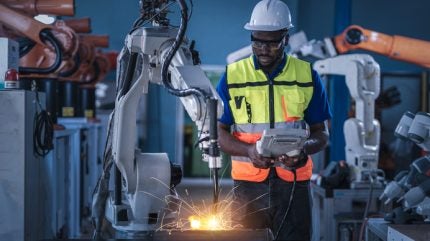
Automation is not new. The fear of robots displacing workers has existed since the Luddites took their frustrations out on machines. However, the fear of bigger, meaner and smarter robots has never been more palpable.
Automation has also come under focus in the FDI world. UNCTAD cites it as one of the structural factors causing the decline of manufacturing FDI along with geopolitical tensions and the rise of sustainability demands. The last two factors are easier to spot on the news. Trump’s trade war with China, conflicts in the Middle East and Russia, governments with radically different approaches to green policies – the list goes on.

Discover B2B Marketing That Performs
Combine business intelligence and editorial excellence to reach engaged professionals across 36 leading media platforms.
Automation is harder to dissect. What does it actually mean? How is it changing the nature of work and who stands to benefit?
Different ways of automating
Contrary to sensationalised headlines in the wake of the AI boom, automation is not likely to rapidly displace less skilled workers in the manufacturing sector. The Covid-19 pandemic showed the world how much of a human-reliant activity manufacturing still is. That’s because automation takes a lot of different forms.
Institute for the Future of Work (IFOW) co-director Dr Abby Gilbert highlights connected worker platforms (CWPs) as an example of a trend in automation that has more complicated implications. CWPs are “adaptable software, designed to service the ‘80% of the world’s workforce who don’t sit behind a desk’.” Software ranges in complexity, but most involve workforce management and increased monitoring through data-gathering technologies.
Gilbert explains that automation processes like this one are not necessarily putting people out of work, rather than changing the nature of work. Some of the main trends that occur when companies use CWPs are:

US Tariffs are shifting - will you react or anticipate?
Don’t let policy changes catch you off guard. Stay proactive with real-time data and expert analysis.
By GlobalData- Intensification of work: increased worker surveillance tended to increase task density within working hours.
- Work methods: systems hold real-time training information and instructions.
- Matching: using the information collected to change the contracting model for workers and move towards a shift-work model.
- Telepresence: overseeing workers remotely and communicating with them while off-site.
The characteristics of CWPs suggest work could become even more ‘giggified,’ demanding, and monitored. It could also result in the ‘deskilling’ of workers.
If companies can provide real-time instructions to workers on how to operate machinery, there will be fewer incentives to invest in training and development. For example, cab drivers in London used to have to take a famously challenging test on their knowledge of London’s thousands of streets. With the rise of ride-sharing apps like Uber and Bolt, that is no longer necessary, as the app provides live instructions to new workers. The same logic would be applied to operating machinery.
This could be a particularly hurtful trend in LEDCs, where low labour costs have tended to attract investment. If developments in automation do not require more skilled workers, then countries will miss out on investments that, at one point in time, could have been an opportunity to upgrade working conditions.
The rise of telepresence could also affect workers on the assembly line. This would allow managers to monitor and give instructions to their workers without being on-site, or perhaps even in the same country. This would decrease the usual benefit of job creation through FDI investments in manufacturing plants.
The implications of CWPs counter the narrative that more technology and AI will phase out repetitive low-skilled labour that is usually undertaken in difficult working conditions. Gilbert highlights Moravec’s Paradox as an explanation for this trend. This is the observation that AI and robotics can handle more complex tasks, but that it is more difficult to get them to do simple, repetitive actions.
While CWPs are just one example of automation, they show that it has the potential, at least in the short run, to not discard low-skill work but rather make it more precarious.
Changing work and cross-border investments
Automation processes have the potential to diminish the relevance of labour costs, usually a very important factor in manufacturers opting to build plants in LEDCs.
However, this potential to displace workers depends on how much of a cost-saving measure it would be for companies.
GlobalData economist Tom Hopgood explains: “Automation in developed countries could lead to reduced offshoring (and even reshoring) from emerging markets if productivity gains are significant enough to lower production costs below the wage levels in those emerging markets.”
Essentially, even if the technology exists for a company to replace an assembly worker, it does not mean they will necessarily use it. However, prohibitive costs tend to go down as technology becomes more widespread meaning that while it is not a huge problem in the short term, the sector is still likely to be transformed in the decades to come. UNCTAD senior economist Bruno Casella suggests this is a structural factor affecting the flow of FDI that is only set to increase.
As firms look to strengthen their supply chains and modernise their production methods, it is essential to understand how these changes may affect the labour market and the economies of entire nations.




